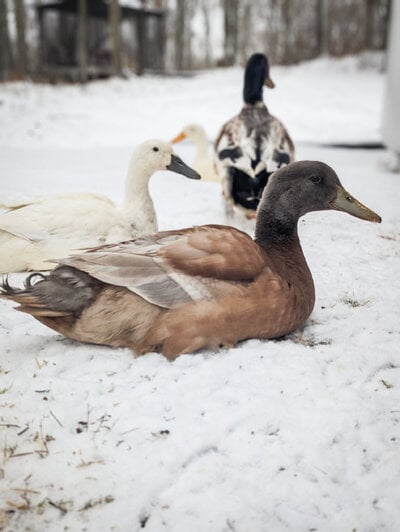Waddlewoods
Chirping
- May 8, 2023
- 83
- 117
- 76
I am just in the process of separating my drakes as my ratio is way off due to bad luck with last year's hatches. My plan in is to have a bachelor pen and only allow one drake at a time with the girls.
As far as genetics goes I'm wondering what you (people more experienced than I) would think about which drake would give me the best hatches. I'm a sucker for a 'mystery bag' hatch or interesting hatches. I love the blue spectrum and pied runners.
The drakes and ducks in question are all runners. My hens are ...
1. Solid black
2. Silver (white with grey feathers and black bill)
3. Chocolate Mallard
Drakes:
1. Mostly white with black dots
2. Half white/half black like an Ancona
3. Blue Splash with black leakage and white markings in bib area.
4. Solid silver (light silver grey)
5. Pastel (see pic)
As far as genetics goes I'm wondering what you (people more experienced than I) would think about which drake would give me the best hatches. I'm a sucker for a 'mystery bag' hatch or interesting hatches. I love the blue spectrum and pied runners.
The drakes and ducks in question are all runners. My hens are ...
1. Solid black
2. Silver (white with grey feathers and black bill)
3. Chocolate Mallard
Drakes:
1. Mostly white with black dots
2. Half white/half black like an Ancona
3. Blue Splash with black leakage and white markings in bib area.
4. Solid silver (light silver grey)
5. Pastel (see pic)



